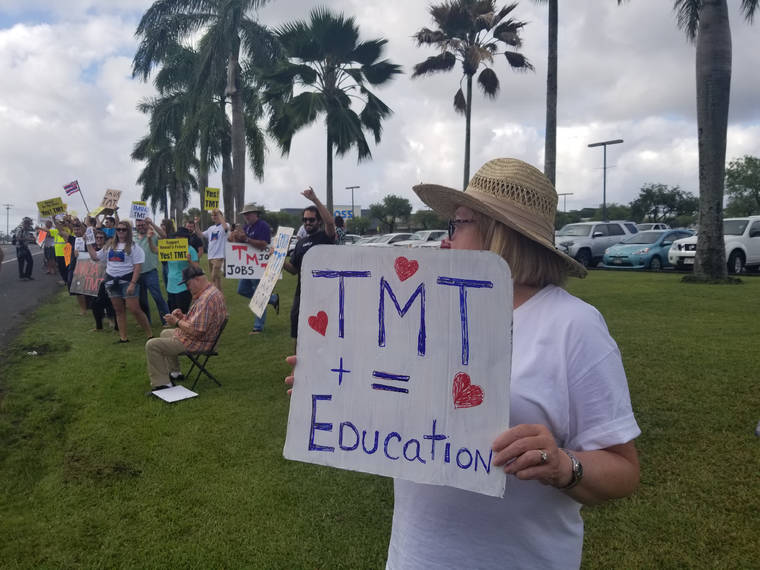

Mauna Kea is a part of the body of lands seized from the Hawai ʻian Kingdom 126 years ago. Is Mauna Kea sacred because of its connection to the genealogy of our people and our Akua Wākea? Is Mauna Kea sacred because she is the highest point in nā kai ‘ewalu and the broader pacific? “It’s also the home of our deities who are embodied in the various water forms.”įor centuries Kanaka families have buried the bones of their ancestors at Mauna Kea, as well as chords of newborn babies, symbolizing their sacred connection to their ancestors, Goodyear-Kaʻōpua said. “Living on islands in the middle of the ocean, it’s where we get our fresh water, a source of life. “In various water forms, the mists, the rains, the clouds that envelop the mountains creates water that percolates down through volcanic rock and charges the groundwater supply,” Goodyear-Kaʻōpua said. Mauna Kea is a sacred place for Goodyear-Kaʻōpua. She also shared tense moments from the front lines of the protest and criticized the ethical standards of research for the project. Goodyear-Kaʻōpua shared three reasons behind why she thinks construction of the TMT is unfathomable. She also a fierce protector of her mauna (mountain) and ‘āina (land). She’s Kanaka Maoli and an associate professor at the University of Hawai ʻi at Mānoa. Goodyear-Kaʻōpua was one of the first to stand arm-in-arm with other wahine (women) to protect elders from heavily armed officers. “The kupuna (elders) there had made a line and wanted to be a first line of defense.” “While we were there, there was a gathering of hundreds of Kanaka and supporters at the base of the road,” Goodyear-Kaʻōpua told National Observer after leadership between opposing camps found a temporary truce after a week of peaceful disruption.

The protectors spent over 11 hours on the cattle guard on the first day. Supporters of the $1.4 billion TMT, such as the National Research Council of Canada (NRC), which provided funding of up to $243.5 million over 10 years, say the massive telescope will lead researchers deeper into space than ever before.īut the question continued to be raised is: at what cost?

It’s a chapter in a long, rich history of Hawai ʻian independence and resistance to the settler state’s illegal overthrow of the kingdom 126 years ago. The growing movement at Mauna Kea and across Hawai ʻi is the latest act of Kanaka Maoli (Native Hawai ʻian) self-determination and sovereignty. What started as a small contingent of kia ’i (guardians) standing together to protect their sacred Mauna Kea - a dormant volcano and, geographically speaking, the main watershed area for the island - from the development of a Thirty Meter Telescope (TMT) has escalated into a land protection movement beyond Hawai ʻi’s islands. It was cold, dark and all eight people were willing to risk arrest for their actions. This article was originally published by the National Observer and is republished here with permission.Īround three in the morning on July 15, Noelani Goodyear-Kaʻōpua, her partner and six other protectors chained themselves to the cattle guard at the Mauna Kea access road. How the Hubble Space Telescope Works (Infographic)įollow Chelsea Gohd on Twitter Follow us on Twitter and on Facebook.Like Tweet Email Print Subscribe Donate Now.World's Largest Reflecting Telescopes Explained (Infographic).NASA's Planet-Hunting Kepler Telescope Explained (Infographic).The site is also far from city lights (thanks in part to a light ordinance on the island), making light pollution almost a non-issue, according to the Institute for Astronomy at the University of Hawaii. The site's exceptionally stable atmosphere and lack of clouds allow for more detailed observations. At a staggering altitude of 2.5 miles (4.05 kilometers), the atmosphere above the mountain is extremely dry, which is ideal for measuring infrared and submillimeter radiation.Ī tropical inversion cloud layer separates the dry upper atmosphere from the air down below. This site, sacred to those native to Hawaii, is continuously chosen for observatories like the TMT for a few reasons. Observing in wavelengths from ultraviolet to infrared, TMT is designed to have a resolution 12 times sharper than the Hubble Space Telescope, project officials have said.Ĭurrently, astronomers from around the world use 13 telescopes, which are housed at 12 facilities, at or near the summit of Mauna Kea.

The $1.4 billion TMT, named for its 98-foot (30-meter) diameter prime mirror, is designed to use advanced spectroscopy and imaging to improve ground-based observations of the universe.


 0 kommentar(er)
0 kommentar(er)
